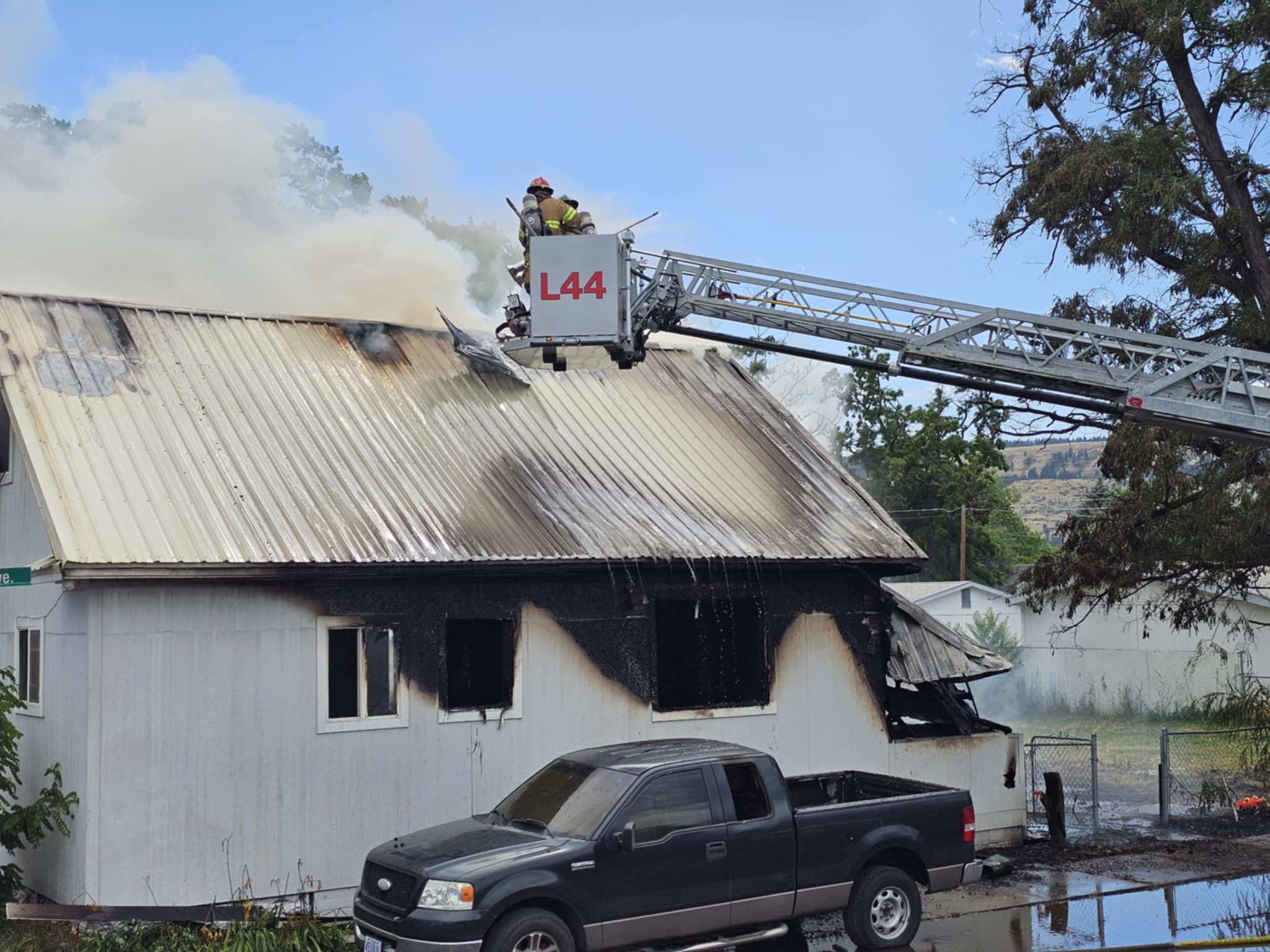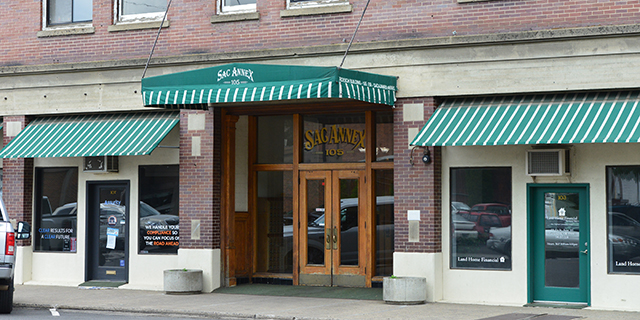Putting together a dining strategy
Published 8:28 am Friday, December 20, 2013

- Grande Ronde Hospitals Registered Dietitian Nutritionist and Certified Diabetic Educator Susan Lewis shows two foods that can rack up the carb grams and blood sugar at any holiday meal. The half banana has 15 carbohydrate grams and is equivalent to one carb unit. The whole potato is 37 carbohydrate grams or 2.5 carb units. Not exceeding 45 carb grams per meal is ideal but takes a dining strategy.
Holiday season offers plenty of temptations to those watching what they eat
If the holiday words “stuffed,” “butterball” and “puffs” are any indication of things yet to come, then listen up to the dining tips offered by Susan Lewis, a registered dietician nutritionist and certified diabetic educator at Grande Ronde Hospital.
“The holiday season will be under way and all those cocktail parties, family dinners and sweets at the office could spell trouble for your waistline come Jan. 1,” said Lewis, who has been a dietitian for the past 36 years.
Why all the fuss? Because the average person eats about 4,500 calories at holiday meals, according to the Calorie Control Council.
“If that’s not enough, maybe this is: The average person gains about seven pounds between Thanksgiving and New Year’s,” Lewis said. “Seven pounds is equivalent to more than 24,000 calories.”
Lewis recommends that holiday partygoers plan a dining strategy before they go to those meals and parties. First, start your day with exercise to rev up your metabolism. Then drink water because “the more water you drink, the less you eat,” she said.
Drinking water is important for older individuals because age mutes the thirst center located in the hypothalamus of the brain. As a result, the aged brain no longer signals thirst as often as it should. Seniors need to be reminded to drink eight cups of water each day, and that’s just as important as not skipping meals.
“If your holiday meal is in the afternoon, don’t skip breakfast and noon meals,” Lewis said. “Eat at regular intervals. Otherwise you’ll arrive hungry and overeat. Never exceed five hours between meals.”
Instead, eat a small, protein-rich snack
before you go to the party, like a handful of nuts, yogurt and fruit, a skim milk latte, an energy bar or even a half turkey sandwich will work.
People who have to track blood sugar levels shouldn’t assume levels are fine because they feel OK, Lewis said. People should check their levels before eating a big meal. Normal levels are between 70 to 110, depending on age and fasting levels. Two hours after a meal, the count should be 140 or less, Lewis said.
Whether it’s high or low, people should tend to their levels right away, Lewis said.
“Take your medications per your physician’s orders,” she said.
If you are asked to bring a dish to pass, then bring something with low carbohydrate grams that you can enjoy. That could be a vegetable dish, a meat dish or a tossed salad – all have insignificant carb grams – which is a great choice at big meals. Salad dressing is counted as a fat, but Lewis cautions about the calories and suggests a useful tip.
Get the dressing in a side cup, then dip fork tongs into the dressing and pierce the salad. Dressing will be included with each bite, but will not use as much dressing as therewould be poured over the salad.
Desire seconds?
By all means, but choose the right foods.
“You can have seconds on fresh vegetables,” Lewis said. “Seconds on fruit should be eaten after you eat the pie or dessert, but calories can add up by eating too much. Serving size should be 3/4- to 1-cup portions. That’s reasonable.”
Wise eaters know it’s a numbers game – the goal is not to exceed a certain number of carb grams per meal.
“A meal should be between 30 and 75 carb grams,” Lewis said. “The number of grams depends on your body size. A big guy who does physical work regularly can get away with 75 carb grams, but the average person is probably looking at 45 carb grams per meal.”
The carbs can add up fast, though. One half banana is 15 grams of carbohydrate or 1 carb unit.
Lewis recommends that you look over the holiday menu first and choose your dessert. That food will have the most carbs, so calculate the carb grams and what’s left is your allowance for the rest of your meal. If you want that sliver of pumpkin pie at 15 grams, then fill up the rest of your plate with the fresh vegetables, the meat and a salad.
Lewis recommends passing on the everyday, ordinary foods.
“Don’t waste your extra calories on foods you can have anytime like nuts, chips and dip, cheese and crackers and so on,” she said. “Instead, enjoy holiday foods that you really like in moderate portions and pass on the ones you don’t.”
When faced with a tray of hors d’oeuvres, make good choices.
“Lower calorie choices include shrimp and cocktail sauce, chicken saute, sushi and crackers with antipasto,” said Lewis. “If you really want those high fat hors d’oeuvres, go right ahead, but stop at one. Keep in mind that four little salmon-filled puffs can set you back 400 calories and one-half day’s worth of fat.”
Alcoholic beverages are liquid calories and a real concern for those watching their blood sugar levels.
“Drinking more often will result in a high blood alcohol concentration and a weakened resolve to eat sensibly,” said Lewis. “Set your limit and resolve ahead of time that you’ll have only two drinks and then switch to water. If you don’t like plain water, spice it up with Crystal Lite flavoring.”
Learn to politely say “no” to food offers that don’t fit your dining plan. Set your limits and stick with it.
Simply say, “No thank you. I’ve had enough. It was delicious!”









